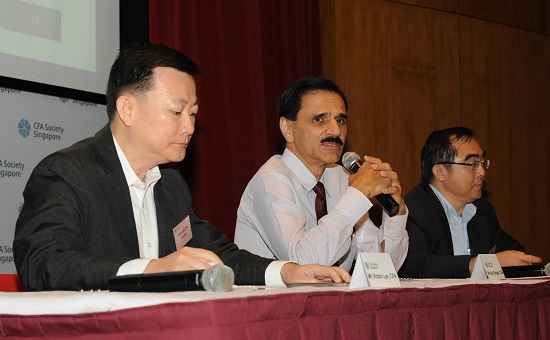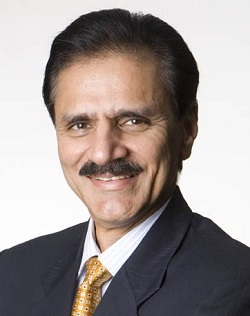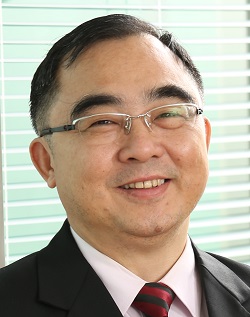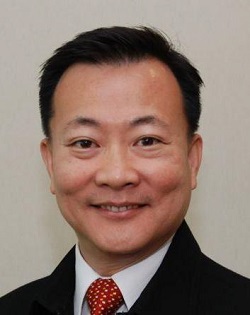 At CFA Singapore’s launch of its Code of Conduct for Investment Committees, finance industry veterans shared their experiences as members of investment committees. L-R: Victor Lye, Aje Saigal and Peter Lai
At CFA Singapore’s launch of its Code of Conduct for Investment Committees, finance industry veterans shared their experiences as members of investment committees. L-R: Victor Lye, Aje Saigal and Peter Lai
Today, many needs of the socially disadvantaged in Singapore are tended to by over 400 voluntary welfare organizations (VWOs) that are funded by public donations. However, the funds of many smaller VWOs are precluded from benefiting from the services of professional money managers.
At CFA Singapore's launch of its Code of Conduct for Investment Committees, experienced investment committee members Victor Lye, Aje Saigal and Peter Lai shared insights on what fund trustees need to consider.
Their discussion, which appeared in the latest issue of The CFA Singapore Quarterly produced by NextInsight, is republished here with permission.
 AJE SAIGAL, CFA
AJE SAIGAL, CFAAs the founding partner of Nuvest Capital, Aje Saigal launched the Nuvest Fund in July 2012 with seed investment from GIC. The Nuvest Fund strategy focuses on global asset allocation with an emerging market emphasis to achieve superior capital growth with moderate risk.
Aje built his investment career of over 30 years in the GIC, having joined the organisation from inception in 1981. His first 20 years were focused on the equities asset class. He was CIO, Global Equities from 1990 to 2003. From 2003 to 2012, as Director of Investment Policy and Strategy, responsible for implementing GIC’s global asset allocation strategies.
Aje currently serves as independent director of the US-based Emerging Markets Growth Fund and the Singapore-based Centre for Asset Management Research and Investment at the National University of Singapore.Q: What are some considerations when setting up an investment committee, especially in member selection?
AJE SAIGAL: I’ve been on the SINDA investment committee for over 20 years. Finding the right people for the committee is a common issue faced by non-profit organizations. It helps when your board comprises of heavy weights. It is very hard to say no when one of these people invites you to join an investment committee. In the case of SINDA (which was somewhat unique because it was a self-help group set up by the government and its patron was the Prime Minister himself), we have not had much of a problem roping in people with the necessary qualifications and competencies.
VICTOR LYE: Members of your investment committee must understand the bigger objectives of the organization that they are serving. While the right qualification is the obvious criteria, affinity for the organization is also very important. The challenge is finding people with the necessary experience, affinity and qualifications as well as the time to serve. There are many qualified accountants but very few with the spare time.
The CFA Singapore Volunteer Register is a good step and I hope more VWOs and other organizations that want to set up investment committees can use this to find suitable people. One of the practical issues that I’ve faced is people with all the prerequisites have conflicts of interest. These are obviously people from the finance industry.
The question is: Are members of an investment committee allowed to bid for the VWO’s mandate for financial services? My belief is one should refrain from bidding. It is difficult for a charitable organization to set up an investment committee because of its small size and inability to get surpluses or even cash flow for investment. Secondly, it is difficult to get suitable persons to come on board when the organization is of little commercial interest.
PETER LAI: I’ve been exposed to 3 different types of organizations. I was on the investment committee for a cultural organization. That committee was government appointed. It had knowledgeable people such as accountants and bankers who could agree on investment policies, asset allocation and how to set performance benchmarks. Then, I was invited to join the investment committee of a top school that had a large reserve. The existing committee members were alumni, very successful businessmen, corporate executives, and some of them have also donated money to the school. To them, making money is their business and life.
The sponsored funds were in bank deposits generating interest of less than 1% and I had to persuade them to consider fund managers who could generate better returns. I spent a lot of time educating them about fund managers: How to set benchmarks, how to write investment policy statements step by step. It was a rewarding experience. After a while, they put in S$10 million, then S$20 million. For the past three years, the fund was invested only in bonds; i.e. no equities. But the return improved, and they are happy with it. When the downturn came, the portfolio had enough fat accumulated to remain in positive territory, and they are happy with that.
I agree with Gerard: Before managing your assets, look at your liabilities and your future cash flow commitments. Your liabilities have to be planned using the right asset management policy. The third non-profit organization that I advised on the management of money was a clan association. The clan ended up with S$200 million in cash after selling a property.
It has been 4 years of educating the trustees, and gradually they invested a substantial portion of its funds in bonds. Last year, we started putting 10% in equities.
The CFA Singapore Code of Conduct for Investment Committees (IC Code) is a good place to start. This may sound controversial, but you can also learn much from Youtube and Internet forums. You learn even more by exchanging ideas with fellow investment committee members who are experienced.
 PETER LAI, CFA
PETER LAI, CFAPeter Lai manages his own family fund and also sits on the boards of several companies listed on the SGX, LSE and HKSE. He also advises several charities and investment funds in their investments into the bonds, listed equities and private equities markets.
Peter has more than 30 years of experience in investment banking and consulting, asset management and securities trading. He was formerly an Adjunct Associate Professor in the NUS Business School and the Director-in-Residence with the Saw Centre for Financial Studies.
He graduated with a BA and MA degree majoring in Economics from the University of Cambridge. He is also a Fellow with the Chartered Institute of Marketing, UK. Q: How many investment professionals are good for the committee?
AS: I think the IC Code manual says 3 to 8, but small funds do better to start with one. Even having only one pseudo expert on the investment committee is better than waiting around until you have enough people, no matter how small your fund is. Not doing anything about your funds is also a decision, which you may eventually regret. Inflation may eat into the spending capacity of your funds. Budgetary needs may also catch up with you faster than you expect.
VL: The IC Code manual provides the model answer but in practice, you need to have enough members who have sufficient time to meet. Secondly, you need to understand the organization, and that may require having non-financial experts on the committee. You need to look at your governing body, your investment committee and the dynamics of your organization (the personalities involved).
I may need someone on the investment committee who is able to give of his time on short notice to settle some issue that crops up. I may also need someone who is able to understand the issues at source.
The financial experts within the committee should be persons of balanced (rather than extreme) views, who are willing to listen and open to reason. If you have dominant members, the other members will simply acquiesce to that dominant member’s views.
With regard to experience, I need people who are familiar with bonds, those familiar with equities and those familiar with real estate (in the Singapore context).
PL: It is good to have a fund manager on your investment committee, but that is not a necessity. Fund management is a unique knowledge and skill. An investment banker, an accountant or a broker is not a fund manager. What is important is the investment committee member must be able to ask the right questions. For example, what is QE? What is duration?
Don’t worry about the time taken with fund managers because you are clarifying your doubts. It is important that the investment committee understands what the money is being invested in. So, you have to ask the questions even though they may seem stupid.
Sometimes, I act blur and ask the fund managers to explain financial terms even though I know the answer because I know my committee members do not understand them. That is one way I help train my committee members, to get them up to speed with communicating with fund managers.
Q: What about the structure of the investment mandate?
AS: The most important thing is to set up the investment policy statement (IPS), which spells out what you can or cannot do, what your investment objective is, and what your risk tolerance is. For very risk-averse committees that don’t want to do anything for fear of losing money, an IPS documenting your investment objective and risk tolerance is your best defence. Even if you do lose money, your safety net is in acting within documented guidelines, provided that you lose within the limits that you have already set. Have a good discussion with your board on the purpose of the organization and the purpose of the funds, explaining how you need to take some risk to get a certain return for your long-term objectives. Thinking about the return objective is extremely important.
I take Gerard’s point that this applies to funds with a longer-term investment view. If you need the funds in one to three years, your choices are much more limited in terms of trying to keep up with inflation. Express your return objectives in terms of inflation to the extent you are able to take a long-term view. Then, it becomes a question of ‘How much ahead of inflation?’ This leads to the next question, “How much risk are you willing to tolerate?”
I am blessed with enlightened people on the board of SINDA, who understand things like inflation and the need to preserve and grow purchasing power. At SINDA, we express our return objective as 1.5% above Singapore’s inflation. It seems a little too modest, but actually, it is still quite challenging. Earning a return that is 1% to 2% above inflation consistently is not an easy thing to do, but it gives you a return objective that stands the test of time. As the return objective can be a moving target in different economic environments, using an inflation-plus target is more realistic.
VL: The IPS is an important document but I try not to think of it as a defence mechanism. I try to think of it as a document to bring everybody back to a common reference point. If you take risk, you have to stomach market volatility. That’s the biggest problem in educating people with surplus funds to invest, especially when you have diverse people on the governing board, even when some of them sit on the investment committee. At one instance of market volatility, someone questioned whether the investment committee should change the IPS because it appeared that there was no way the return objective would be met given the market conditions.
However, if the fund managers had accepted your mandate and set up your IPS, that means they believed they could meet the target. The IPS is a document they use to drive their tactical investment styles. An investment committee is there to make sure you stick to the mandate and that we do not change the target for the managers. Internally, the investment committee has the very important role of educating and managing the different opinion makers that you report to or work with.
 VICTOR LYE, CFA
VICTOR LYE, CFAVictor Lye has been in public policy and financial services for more than 25 years.
He started his career in the Ministry of Trade and Industry in 1987. He joined the PAP in 2001 and was elected to the inaugural PAP Policy Forum in 2004.
In the private sector, he has held leadership positions in investment research, stockbroking, corporate finance, asset management, direct investments and insurance.
He is also Chairman of the National Council Against Drug Abuse and Director/Chairman of the Investment Committee of the Singapore Chinese Orchestra.
He has a Bachelor of Economics (First Class Honours) from the University of Adelaide and was a Colombo Plan Scholar.Q: What was your experience in choosing fund managers when you required more than one?
VL: If you have the luxury of surplus funds, the governing body has to decide if you want to manage it internally or hire a fund manager. Whether you manage it in-house or externally, do have an investment committee and a written IPS. If you have to select external managers, look at your time horizon and risk tolerance for your investment mandate. That’s different from your risk appetite. An analogy of risk appetite is someone who is hungry and craving for deep-fried chicken. However, this hungry person may have overly high cholesterol levels and would be better off avoiding high-fat food.
A fund manager coming in from outside will look at your fund size and risk appetite. They may not know your liquidity requirements, which may be quarterly, half-yearly or annual. It is important for the investment committee to communicate your risk tolerance to the fund manager who is looking in from the outside. If you can do that, you then can look at the different ways the fund manager can contribute to your objectives. The first thing to get right is your risk tolerance. You look at your own prescribed objectives and assess whether this fund manager has the probability of achieving it for you.
The other issue is: How many managers? If you have one fund of $40 million to $50 million, there is nothing wrong with giving it to one manager. You come to a decision after talking to the governing board and the investment committee.
In my opinion, the ability to break the funds into different blocks for different fund managers allows the investment committee to assess the managers. However, this is subject to each block being sizable enough to make sense for the manager. I can’t break up $3 million into $1 million each. That would constrain the type of manager and the investment management style.
Secondly, you need to stagger the mandates to mature at different times. You don’t want all the funds to expire at the same time.
AS: I prefer to give broader mandates, simply because the investment community comprises of people who are skilled in their respective fields. Your role is more to oversee the process. You don’t want to micro-manage the fund. Your mandate should allow the professional to make the asset allocation decision for you.
You want to look at the experience of the fund manager in the context of the kind of mandate that you are giving out. You want to look at their past performance, but that would not be my over-riding criteria because there is a certain element of randomness in investment performance. It is very dangerous to extrapolate performance in the last 2 to 5 years.
This will stand you in good stead: Using people who are experienced in the markets, whose judgment you can trust, and using a firm with a good reputation.
PL: While there are short-duration bond funds for small charities, it is usually difficult to get any fund manager willing to accept anything less than S$10 million. I am fortunate enough to be on the investment committee for an endowment with reserves of more than S$10 million. In the non-profit organizations that I have been in, we have always had 3 fund managers. We diversify not only in asset allocation, but part of the risk management process is also diversifying our choice of fund managers. The lengthy selection of a fund manager can be summarized in 3 points: process, philosophy and people. Every 3 years, we open our investment mandate for tender. We continue the mandate if there is nothing wrong with it. But as part of corporate governance, we call for a new beauty parade every three years. Three years is the duration of our investment mandate.
Q: Many fund management firms have gone through much management restructuring. How do you choose them now that many of them may have changed ever since the global financial crisis?
PL: In my experience, it is easier to line up the larger fund managers such as DBS, UOB, Lion Global Investors or Fullerton. It is not easy to line up boutique fund managers who have done very well, or even big global names. The board of trustees may like some award winning boutique fund manager after meeting them, but when it comes to appointment, the large local firms usually win the tender. The governing council members I’ve encountered are conservative businessmen who are less willing to venture with foreign names.
Q: As an investment committee member, how do you view risk?
AS: No matter how sophisticated the investment committee members may be, it is very difficult for them to quantify risk. One approach is to ask the “what if ”’ questions. For example, “What if this fund that the investment committee is managing goes down by 30%?” Such questions help identify the weak links within the governing body. Usually, only one individual will say, “I really don’t want any losses.” In such a situation, the other members will have to prevail over that one individual.
If you are an investment committee member who is held to task to deliver the returns within the risk guidelines, the onus is on you to try and pin that down. The best time to ask these questions is immediately after a crisis. During the global financial crisis, equities went down by 50%, and our fund went down by X%. Some questions we asked were: “Is this something you feel should never have happened to our fund?” Or “Yes, we’ve been through it and we don’t want anything worse than this.” This way, you know where the threshold for pain is.
Q: As a fund manager, I’ve seen proposals with Value-At-Risk (VAR) as a risk parameter. Our quantitative personnel told us that if we shift the dates by as little as two to four weeks, the VAR can turn out to be very different. What other risk measures do investment committees look at?
PL: Not everyone knows what VAR is. I explain to my board of trustees: In investment markets, volatility is your friend. That is when good fund managers make money for their clients. Make sure you have a good IPS. Once you have that set up, don’t worry about the volatility.
Related story: Issues, Opportunities When You Manage Fund For Charity, Trade Union & Other Non-Profit Bodies







